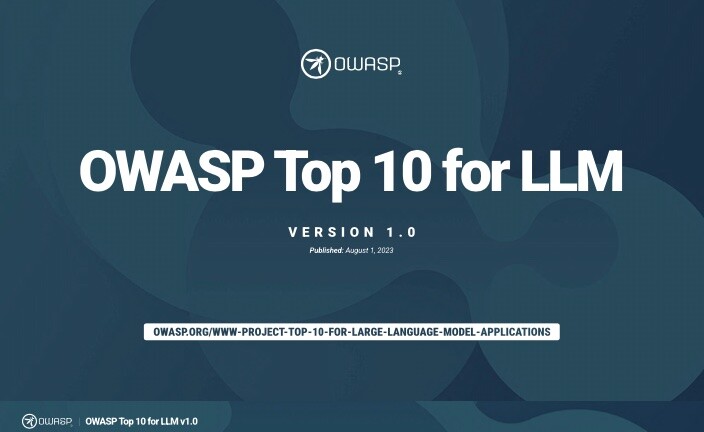The Open Web Application Security Project (OWASP) has unveiled the much-anticipated OWASP Top 10 for Large Language Model (LLM) Applications version 1.0. This release highlights the critical security risks associated with the use of Large Language Models (LLMs) and offers valuable insights to safeguard against potential vulnerabilities.
The primary objective of the OWASP Top 10 for LLM Applications project is to raise awareness among developers, designers, architects, managers, and organizations regarding the security challenges inherent in deploying LLMs. By offering a comprehensive list of the top 10 most critical vulnerabilities impacting LLM applications, the project seeks to empower stakeholders in the LLM ecosystem to build and use these applications securely.
The Working Group responsible for this initiative comprises nearly 500 security specialists, AI researchers, developers, industry leaders, and academics. Over 130 experts actively contributed to the development of this comprehensive guide.
The OWASP Top 10 for LLM identifies the following critical vulnerabilities:
LLM01: Prompt Injection
This vulnerability manipulates LLMs through clever inputs, resulting in unintended actions by the system. It covers both direct injections that overwrite system prompts and indirect ones that manipulate inputs from external sources.
LLM02: Insecure Output Handling
This vulnerability arises when LLM outputs are accepted without adequate scrutiny, potentially exposing backend systems to severe consequences such as Cross-Site Scripting (XSS), Cross-Site Request Forgery (CSRF), Server-Side Request Forgery (SSRF), privilege escalation, or even remote code execution.
LLM03: Training Data Poisoning
This risk occurs when the training data used for LLMs is tampered with, introducing vulnerabilities or biases that compromise security, effectiveness, or ethical behavior. Sources of data, such as Common Crawl, WebText, OpenWebText, and books, can be manipulated to achieve this.
LLM04: Model Denial of Service
Attackers exploit this vulnerability by causing resource-intensive operations on LLMs, leading to service degradation or high costs. Given the resource-intensive nature of LLMs and the unpredictability of user inputs, the impact of such attacks can be significant.
LLM05: Supply Chain Vulnerabilities
This risk pertains to the compromise of the LLM application lifecycle due to vulnerable components or services. Incorporating third-party datasets, pre-trained models, or plugins may introduce additional vulnerabilities.
LLM06: Sensitive Information Disclosure
This vulnerability results from LLMs inadvertently revealing confidential data in their responses, leading to unauthorized data access, privacy violations, and security breaches. Mitigation strategies should include data sanitization and strict user policies.
LLM07: Insecure Plugin Design
LLM plugins with insecure inputs and insufficient access control are susceptible to exploitation, potentially resulting in severe consequences like remote code execution.
LLM08: Excessive Agency
This vulnerability arises when LLM-based systems undertake actions that lead to unintended consequences. It can be attributed to excessive functionality, permissions, or autonomy granted to the LLM-based systems.
LLM09: Overreliance
Overdependence on LLMs without proper oversight can lead to misinformation, miscommunication, legal issues, and security vulnerabilities due to the generation of incorrect or inappropriate content by the models.
LLM10: Model Theft
Unauthorized access, copying, or exfiltration of proprietary LLM models poses significant risks, including economic losses, compromised competitive advantage, and potential access to sensitive information.
The OWASP organization encourages experts to actively contribute and support this ongoing project to improve the security posture of LLM applications.
Developers, security experts, scholars, legal professionals, compliance officers, and end-users are urged to familiarize themselves with the OWASP Top 10 for LLM and adopt the recommended measures to ensure the secure and safe utilization of Large Language Models in various applications. As the technology surrounding LLMs continues to evolve, the research on security risks must keep pace to stay ahead of potential threats.
Found this news interesting? Follow us on Twitter and Telegram to read more exclusive content we post.


